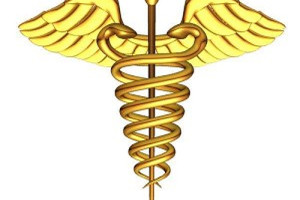WHO Representative Downplays Doubts About Russian Coronavirus Figures

(Article text ©2020 RFE/RL, Inc., Radio Free Europe/Radio Liberty – rferl.org – May 14, 2020 – article text also appeared at rferl.org/a/who-representative-downplays-doubts-about-russian-coronavirus-figures/30611973.html)
The World Health Organization’s representative in Russia has downplayed doubts about the country’s coronavirus statistics even as new public data suggests authorities may be undercounting the death toll from the pandemic.
The comments from Melita Vujnovic, in an interview with Current Time, a Russian-language network led by RFE/RL in cooperation with VOA, come after several media organizations highlighted discrepancies in localized fatality figures for the Russian capital, and comparative figures with other hard-hit European countries.
The data, highlighted by The Moscow Times, The New York Times, the Financial Times, and others, has added to evidence from skeptics, inside and outside Russia, that authorities may be underestimating the toll from the pandemic.
As of May 14, Russian authorities said the country had 9,974 new infections, bringing the official number of confirmed cases to 252,245, and putting Russia in second place, behind the United States, in terms of total infections. The death toll stands at 2,305, up 93 over the past day.
Though Russian officials took some major moves early on in the pandemic to curtail its spread, the number of cases crept up steadily, though at a slower pace than most of Europe, in February and March.
Experts began questioning whether testing procedures were flawed, or whether local and regional officials were misclassifying cases. In some places such as St. Petersburg, for example, the number of pneumonia cases went sharply above seasonal norms.
Moscow Mayor Sergei Sobyanin, who has been a point man for the government’s response, made sobering remarks on the reporting situation in early April, saying testing had been too slow to give a complete picture.
Authorities have since stepped up testing nationwide, giving Russia one of the highest per capita testing rates.
But the death rate from the coronavirus continues to draw skepticism from experts, who say it is implausible that Russia’s creaky health-care system has the capacity to keep COVID-19 deaths so low.
By comparison, the United Kingdom, which has about 11,000 fewer confirmed cases, has a death toll of just over 33,000, while Spain, with about 229,000 confirmed cases, has seen more than 27,000 deaths from the virus.
Russia’s reported mortality rate from the coronavirus also is significantly lower compared to other European countries.
In an interview on May 13 with Current Time, Vujnovic said the organization trusted the Russian official figures.
“One of the reasons for the low mortality rate is that everyone who needed hospital treatment could go there. There was no explosive increase in cases, and Russia bought time to strengthen its health-care system,” she said.
She also noted that the rate of increase in new cases had decreased in recent days: as of May 14, it was around 4 percent, compared with nearly 14 percent a few weeks ago.
“We see a good decrease over the past 10 days. We still have to watch it, but it seems that the epidemic is in the stabilization phase and is moving into the decline phase,” Vujnovic said.
“According to what we’re seeing, this means that the measures to reduce the growth trend have worked,” she added.
Health experts have said the relatively low number may be explained by how deaths are classified; for example, if a person with an underlying heart condition contracts COVID-19 and dies, the cause of death might be attributed to the heart problem and not to the coronavirus.
On May 13, the city health department for Moscow, where the bulk of Russia’s cases are concentrated, released a statement saying that more than 60 percent of Moscow’s coronavirus deaths are not being included toward the city’s official virus death toll.
The discrepancy in mortality figures highlighted by The New York Times and the Financial Times has drawn the ire of the Foreign Ministry, whose spokeswoman insisted the figures were “another sensational anti-Russian fake” and demanded they retract the reports.
“Further steps [by the Foreign Ministry] will depend on whether they publish a refutation,” Maria Zakharova said on May 13, suggesting also the papers’ reporters in Russia could have their ministry accreditations stripped.
A spokeswoman for The Times said that the newspaper stood by its reporting.
“We are confident in the accuracy of our material, based on data published by the official government agency, and interviews with experts from government institutions,” Danielle Ha was quoted as telling Russian media. “No facts cited in our article are in dispute.”
